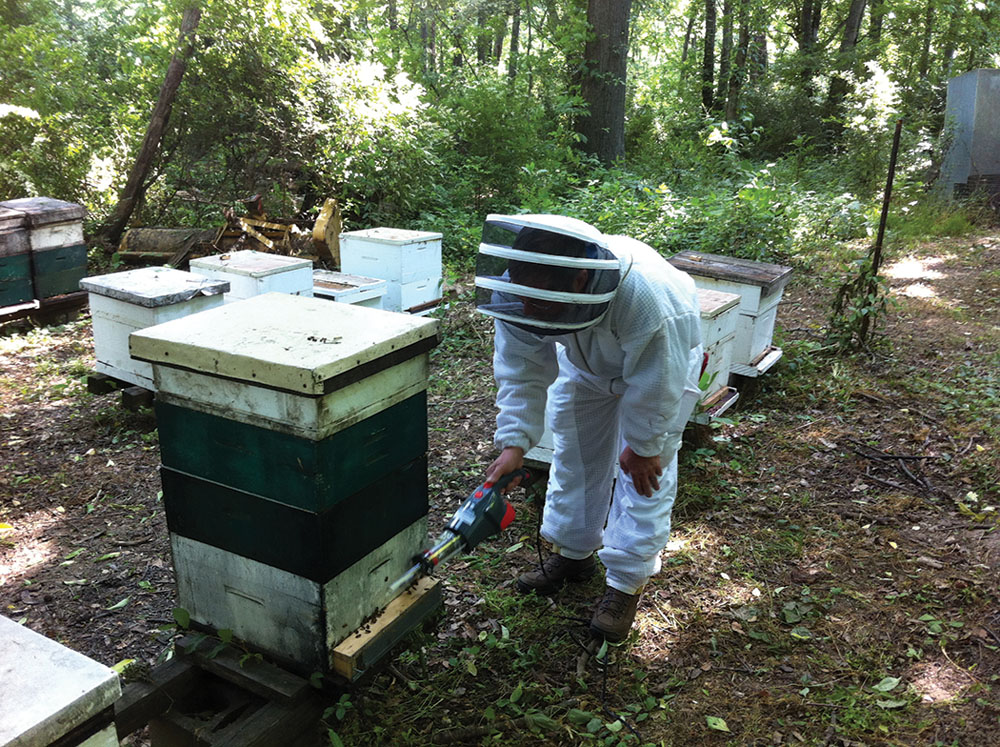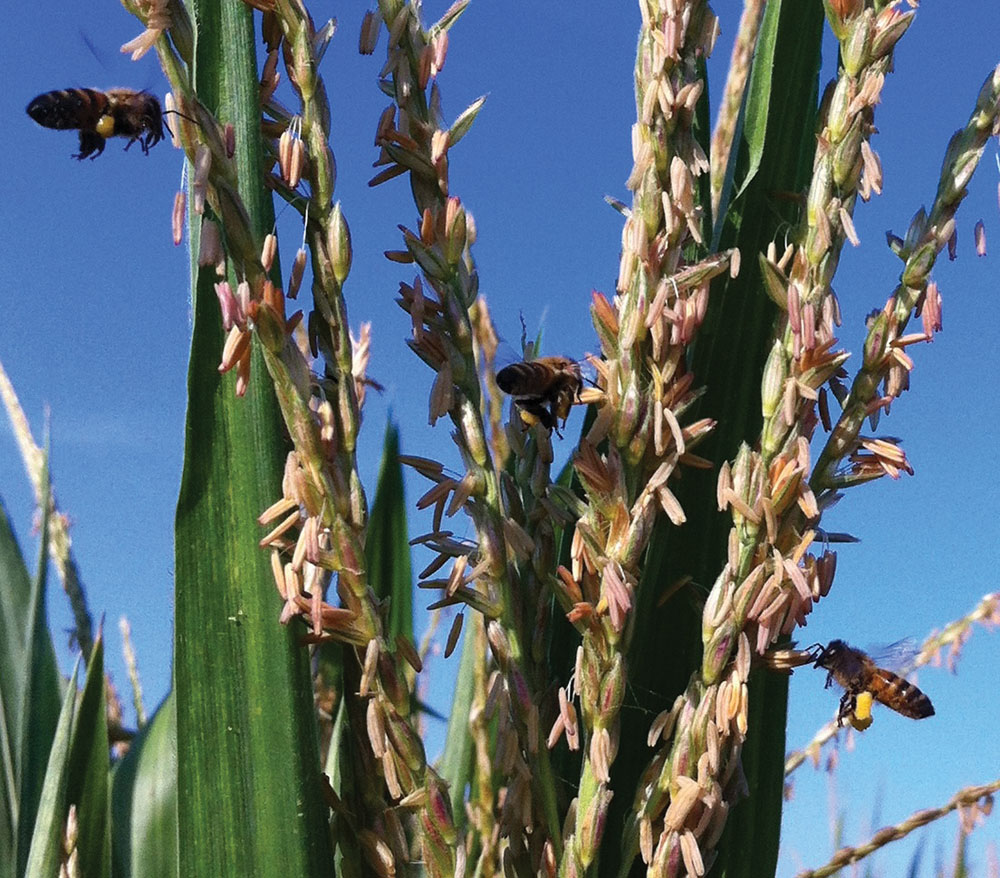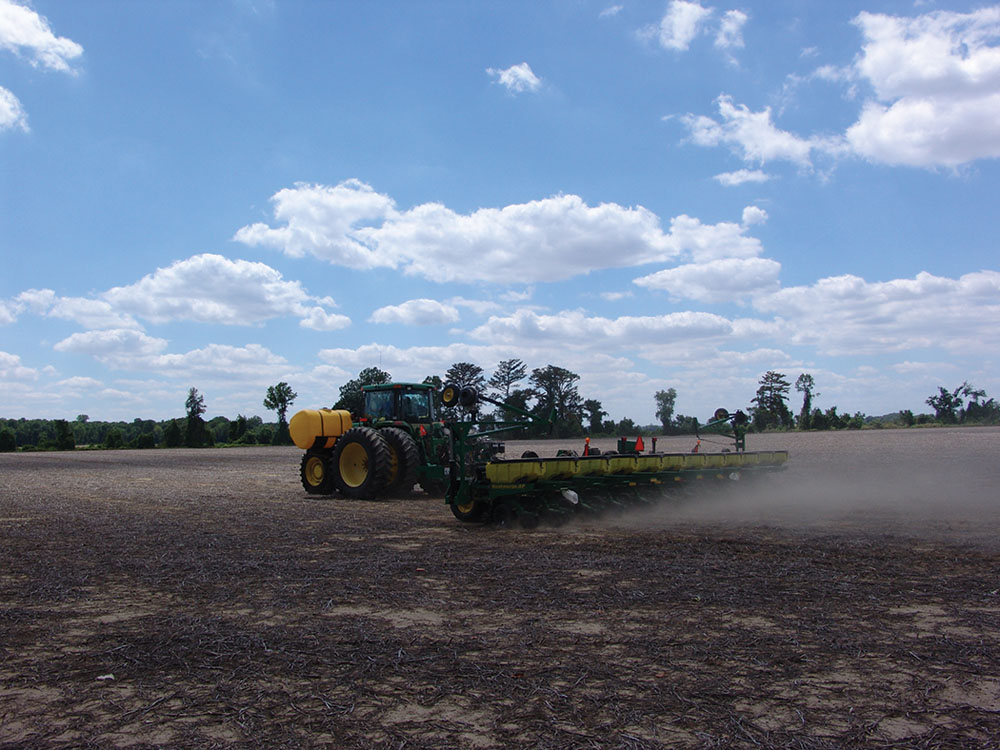by Jeff Harris
The use of a class of systemic insecticides called neonicotinoids remains a highly controversial issue for the general public, beekeepers and government regulators. Some people, including beekeepers, suggest that use of these insecticides have mediated large die offs of honey bee colonies during the last decade or so. However, there remains no unequivocal evidence linking episodes of high honey bee mortality (termed Colony Collapse Disorder) to neonicotinoids or any other insecticides. It is a ‘no brainer’ to say that insecticides have a great potential for harming bees – insecticides kill insects, and honey bees are insects. However, a much higher standard of proof must be met before assigning blame for CCD to any single factor or class of insecticide.
The debate over the use of neonicotinoids swirls. Science-based answers need to guide governance of these chemicals, and unsubstantiated and often emotional claims do not foster a rational and fair approach to deciding the future use of these insecticides. The mammalian acute toxicity of the neonicotinoids is relatively low as compared to many other insecticides that have had extensive use in agriculture, which means that the risks to humans are greatly reduced. The neonicotinoids are relatively more acutely toxic to honey bees than some insecticides of recent popular use in agriculture; however, the class tends to be middle of the pack and generally less acutely toxic than organophosphates or pyrethroids. Acute toxicity does not tell the whole story. The potential harm to honey bees must also include some measure of exposure to bees in order to assign the relative risk.
The use of neonicotinoids as seed treatments has been thought to offer little risk of direct exposure to honey bees (except at the time of planting, see below). The chemicals are under ground with the planted seed, and of course, honey bees forage above ground. Neonicotinoid seed treatments may also reduce risk of insecticide exposure to honey bees because applications of pre- and post-planting insecticides (applied as foliar insecticides to seedlings or within the seed furrows at planting) are no longer needed to control insects that attack young seedlings of cotton, soybeans and corn. One consequence has also been a general reduction in total amount of active ingredient (insecticides) applied per acre as compared to the use of other classes of insecticides. Banning neonicotinoids in seed treatments may significantly and adversely change methods of food production and may actually increase harm to honey bees and other pollinators if there is a return to more foliar applications of older insecticides to control pests affecting the young plants.
What is so special about this class of insecticides that evokes so much concern? The primary reason is the way these insecticides work as systemic chemicals absorbed into plants. Here’s how they work: Seeds of cotton, soybean or corn are coated with a material that forms a crust around the seed, and this material is laced with a known level of a neonicotinoid insecticide. The three most commonly used neonicotinoids in the South are imidacloprid, thiamethoxam and clothianidin. These insecticides leach into the living plant tissue as the seedling grows, and the concentrations in the plant tissue are high enough to kill insects that begin to feed upon the plants. Thus, the plants are protected by the systemic poison adsorbed into their tissues. Obviously, there is some potential for these materials to persist in plant tissues, and there has been much concern about the neonicotinoids remaining in either nectar or pollen when the treated plants begin to flower.
A second major concern is the discovery that residues of some neonicotinoids remain in the environment (e.g. in soil) for more than a year after being applied as seed treatments. The consequences of this persistence are largely unknown. For example, are these chemicals sequestered away in the soil, or are they freely moving about the environment into water and or secondary off-target plants like wildflowers? There are many more questions than answers, but many laboratories are investigating various aspects of these chemicals as they relate to bee health.
In 2012 a group of university researchers from Arkansas, Mississippi and Tennessee collaborated and began investigating various aspects of the relationship between neonicotinoid seed treatments and honey bee health (Stewart et al. 2014). The research team includes entomologists specializing in pest management of row crops, toxicologists and apiculturists. The first series of experiments sought to determine how seed treatments in cotton, corn and soybean relate to subsequent residues of these chemicals and their metabolites in various matrices in agricultural environments that included soil, flowers, nectar and pollen in plants, and honey bee foragers and their pollen loads. The research is pertinent because all of the cotton and corn and 70% of the soybean seed planted in our area are treated with neonicotinoids.
The work in our area was stimulated by reports from the Midwest of neonicotinoid seed treatments potentially affecting honey bees through several routes of exposure. Krupke et al. (2012) showed that exhausts from corn planters created dusts that carried neonicotinoids away from corn fields during planting. They also reported on the persistence of neonicotinoids in the soil long after planting. The dusts drifted onto wild flowers (e.g. dandelions) along field margins, but re-uptake of neonicotinoids from soil may also play a role in high levels of the chemicals in wild flowers.
Neonicotinoids were also found in dead bees from colonies kept near fields at the time of planting. Additionally, the group showed expression of neonicotinoids in corn pollen during anthesis (tasseling), and the chemicals were also found in corn pollen stored by the bees.
Thus, the main possible routes of seed treatment chemicals moving to a bee hive include (1) drift of neonicotinoids onto off-target wild flowers in planter exhausts, (2) re-uptake of neonicotinoids from soil into flowering plants, and (3) retention of neonicotinoids in either pollen or nectar (or both) of seed treated plants. Various researchers (including our Southern group) have replicated the results of Krupke et al. (2012) in which planter dusts carry neonicotinoids to off target wild flowers.
Fortunately, drift may be the easiest problem to rectify. Mechanical modifications of planter exhaust systems and changes in lubricants that are used in seed planters can greatly reduce the expulsion of neonicotinoid dust clouds. Education about the dangers of planter dusts can help mitigate procedures that might inadvertently expose bees to the dusts. For example, farmers can be instructed to load planters or to clean planters far away from apiaries or wild flowers to minimize the chance of drift of chemicals either onto bees or their food sources.
The Southern research group examined neonicotinoid levels in soil, flowers, and forager bees and their pollen loads from numerous fields of corn, cotton and soybean throughout Arkansas, Mississippi and Tennessee (Stewart et al. 2014). Over 80% of soil samples taken before planting showed detectable (≥ 1 ng per g) levels of neonicotinoids. The average level for all samples (n=112 samples from 28 fields) was 10 ng per g (or parts per billion = ppb). As with the Krupke et al. (2012), these finding suggest that neonicotinoids persisted from the previous growing season. However, it is not clear in all cases if the insecticides came from seed treatments or foliar applications of neonicotinoids, which are a common form of control for certain pest insects.
The team also examined about 78 samples of wild flowers that were collected from field margins within 0-3 days of planting. Almost one quarter of these samples showed detectable levels of neonicotinoids, and the average concentration was 10 ppb. However, two samples accounted for more than half of the total insecticide levels that were detected in all flowers. One flower sample came from ground immediately adjacent to where a corn planter had been loaded prior to planting. The flower sample had 257 ppb of neonicotinoid. The second highest came from a flower collected within two hours of planting, and it registered 115 ppb. The results suggest that the exposure of bees to neonicotinoids from wild flowers in recently planted fields is patchy or mosaic, and at least in this study, 70% of the wild flowers had no detectable levels of neonicotinoids. Reduced exhaust dusts and better safety precautions with planters should reduce the risk of exposure to neonicotinoids from wild flowers on field margins.
The researchers also collected bee samples from colonies of bees during two periods of the growing season. The first was at the time of planting (April-May), and the second was the flowering periods (June – September). Colonies were located at an average of 180 meters of field margins. Returning foragers and their pollen loads were monitored from 60 hives kept in 15 apiaries. A total of 74 bee samples were collected, and only two exceeded the detection limit (1 ppb). One of these samples had 48 ppb of neonicotinoid, and the bees in the sample associated with a foliar application of imidacloprid. Another bee sample from a different field was found with 10 ppb of clothianidin. Only one of 24 samples of pollen loads removed from foragers had a trace neonicotinoid level, which is just below the detection limit (1 ppb).
The research team also examined flowers from soybeans, corn and cotton from fields that were planted with varying rates of active ingredients (neonicotinoids) applied to seed coats (Stewart et al. 2014). In four trials with soybeans, no soybean flowers were found with detectable levels of neonicotinoids. Whole flowers were used in the samples, so there was no separation of nectar and pollen here. The researchers also found no detections of neonicotinoids in cotton nectar. The mean neonicotinoid levels in composited samples (n=15) of cotton pollen was under the detection limit; however, one sample cotton had two neonicotinoids detected at a total concentration 4 ppb. Corn pollen varied in concentration of neonicotinoids with the amount of chemical used in the seed treatment. Thiamethoxam averaged less than the detection limit. Clothianidin was detected at 3 and 6 ppb for the two highest seed coat treatment rates. These results for corn are similar to those of Krupke at al. (2012). Soil from two thirds of the soybean and corn fields and 100% of the cotton fields in this study had levels of neonicotinoid > 1 ppb at the time of flowering. The highest level recorded was 18 ppb. Thus, these chemicals persisted in the soil into the flowering periods. Much higher average levels were found in soil of cotton fields (e.g. 129 ppb).
What does it all mean? Neonicotinoids used in seed treatments for crops grown in the southern U.S. were found in the soil in a majority of fields, in wild flowers immediately after planting, and in the pollen of corn and cotton from at least a few samples in this study. Neonicotinoids were not found in either the nectar of cotton or in whole soybean flowers. One question the researchers tried to answer was whether the average levels of neonicotinoids found in various samples reflected a high risk of acute oral toxicity to honey bees (Stewart et al. 2014). They used a previously reported LD50oral = 0.004 µg per bee, which is the dose for oral intake at which 50% of the tested worker bees died after acute ingestion of any of the three commonly used neonicotinoids (imidacloprid, clothianidin or thiamethoxam).
The U.S. Environmental Protection Agency suggests a conservative approach to deciding acute toxicities for honey bees, and they recommend that real exposures should not exceed 40% of the acute LD50oral. Thus, a conservative value of 0.0016 µg per bee was used to estimate the “levels of concern” for ingested pollen or nectar. For example, a previous study found that the maximum amount of pollen ingested by an adult worker bee per day was about 9.5 mg. If a worker honey bee received 0.0016 µg neonicotinoid after eating 9.5 mg pollen, then the level of concern for acute toxicity from pollen would be (0.0016 µg neonicotinoid ÷ 9.5 mg pollen), which is equivalent to (1.6 ng neonicotinoid ÷ 0.0095 g pollen) and equal to 168 ng per g (ppb). For nectar, the maximal amount of nectar eaten per day by a worker bee is about 292 mg. If the worker received 0.0016 µg neonicotinoid in 292 mg nectar, then the level of concern for nectar would be (1.6 ng neonicotinoid ÷ 0.292 g nectar), which is equal to 5.5 ppb. Clearly, in terms of acute oral toxicity, nectar has a much lower critical threshold than pollen.
The researchers concluded that the use of seed treatments in corn, soybean and cotton do provide a potential risk of exposure to neonicotinoids through multiple routes of entry. However, the levels detected in flowers, pollen and nectar suggest that there is no serious health risk to honey bees – at least in terms of acute oral toxicity. The group concedes that more work is needed to get a fuller picture of the potential health concerns for honey bees. For example, they are currently measuring the rates of degradation of neonicotinoids in the tissues of the plants and in the soil. They are also testing whether residues in soil can enter plants through the root system and pose a threat by sequestration into pollen and nectar. They also admit that the current study cannot answer questions about chronic exposure of bee colonies to sub-lethal doses of neonicotinoids through time. Additionally, future experiments need to include measurement of colony health to provide a better assessment of risk. Clearly, more work is needed to assess the total risk profiles for honey bees from neonicotinoids in seed treated plants.
You might wonder, “How come it takes so long to do these studies?” One factor is cost: consider that 560 samples were analyzed in this study at a cost of $200 per sample to give a total cost of $112,000 just to pay for the chemical analyses. This does not count the labor of researchers and their graduate students. Research requires extensive time and money. The good thing is that at the moment there are many research groups trying to better describe the relative risks of exposure to various insecticides for honey bees.
Sources Consulted
Krupke, C.H.; Hunt, G.J.; Eitzer, B.D.; Andino, G.; Given, K. (2012) Multiple routes of pesticide exposure for honey bees living near agricultural fields. PLoS One 2012, 7(1), e29268 DOI: 10.1371/journal.pone.0029268.
Stewart, S.D.; Lorenz, G.M.; Catchot, A.L.; Gore, J.; Cook, D.; Skinner, J.; Mueller, T.C.; Johnson, D. R.; Zawislak, J.; Barber, J. (2014) Potential exposure of pollinators to neonicotinoid insecticides from the use of insecticide seed treatments in the Mid-Southern United States. Environmental Science & Technology 48: 9762-9769, dx.doi.org/10.1021/es501657w|Environ. Sci. Technol. 2014, 48, 9762-9769.









